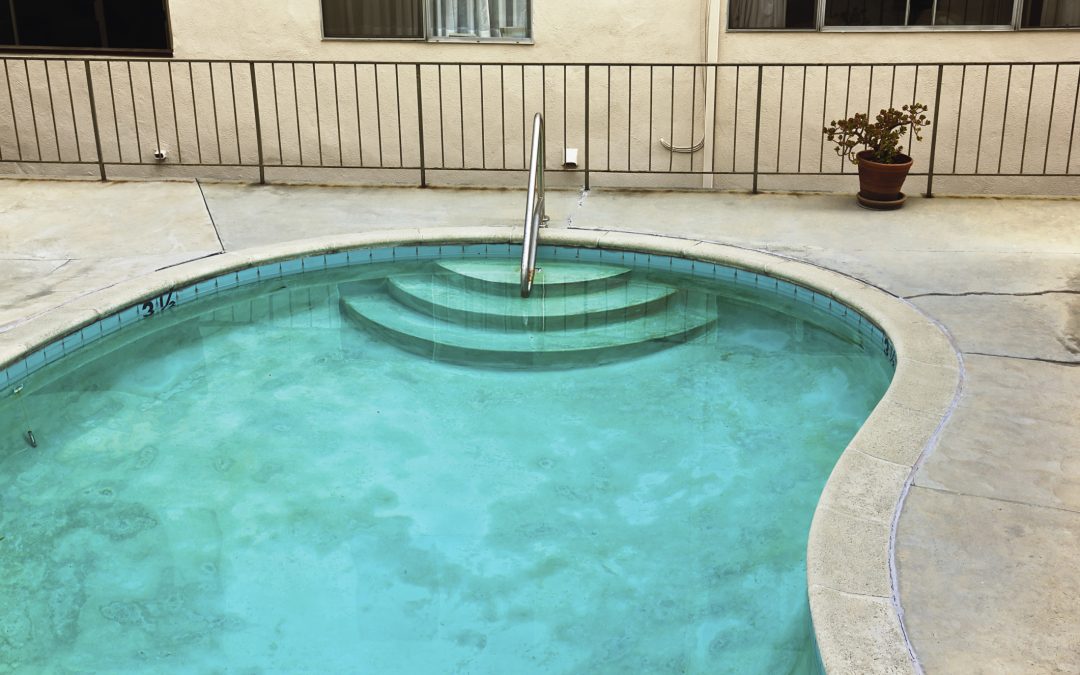ALGAE
Algae spores constantly enter the pool, brought in by wind, rain or even contaminated swimsuits or equipment and a bloom can occur overnight. Caused by out of balance water, high pH and low chlorine, warm temperatures, sunlight and presence of nitrates and/or carbon dioxide, improper circulation, filtration and sanitation. Algae is not only unsightly, it will clog up the pores in a filter and require greater quantities of chemicals.
There are 4 main types of algae:
- Green Algae
Very common and easy to treat with basic chemicals
- Black Algae
Small black spots with a root system, very difficult to treat]
- Yellow Algae
Usually found in shady areas or shaded pools, treat harshly
- Pink Algae
A bacterial slime that forms in corners and on pool equipment
Regular brushing of seemingly clean pools is not only good exercise for you, but prevents dirt from harboring in the pores of the plaster, which is a good start for an algae colony. The use of specialty chemicals or algaecides is highly recommended:
- Potassium Tetreborate (Proteam Supreme): Prevents algae from converting carbon dioxide into the fuel it needs for growth.
- Chitin (Sea-Klear): Removes suspended materials and impurities, allowing the sanitizer to more effectively kill contaminants and improving the effectiveness of the filtration equipment, a very valuable weapon against algae.
- Quaternary Ammonium Compounds: A low grade, foaming algaecide, most effective as an algaestat. (A prevention, not a cure.)
- Polymers: Both an algaestat and an algaecide, non-foaming, effective general algae treatment.
- Copper based: A proven algaecide and algaestat for all types of algae, can stain white plaster surfaces a light blue/green colour.
- Silver based: Prevents bacteria from reproducing. Non foaming and effective with pink algae. Can cause black stains on white plaster. When using copper or silver algaecides, the use of a sequestering agent.
- Chlorine enhancers (Mustard Buster, Yellow-Out or Yellow Treat): Used in conjunction with hypochlorites to help treat yellow algae.

